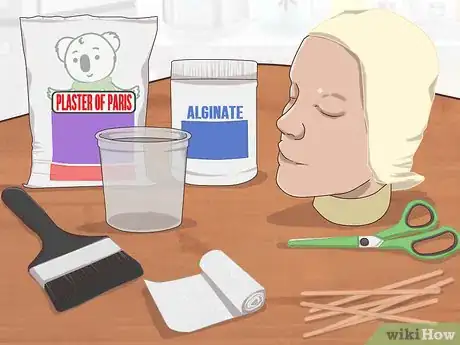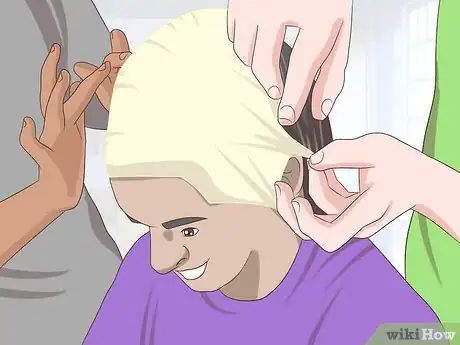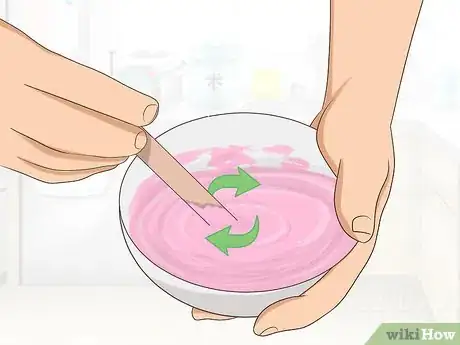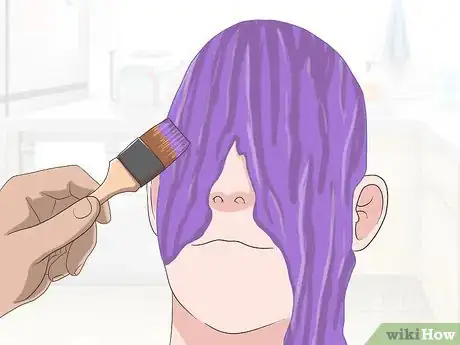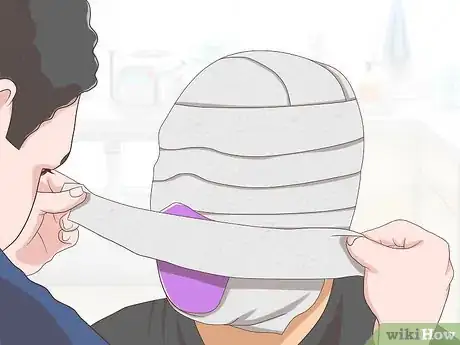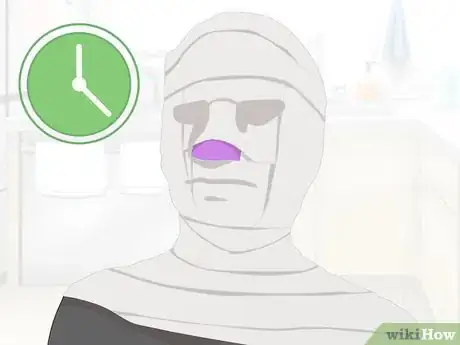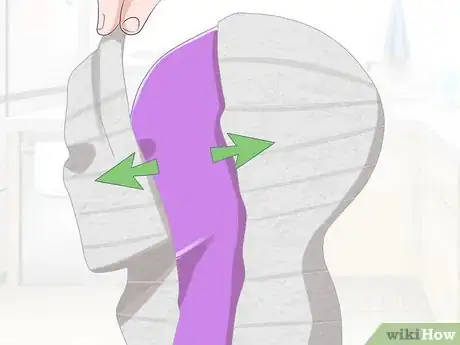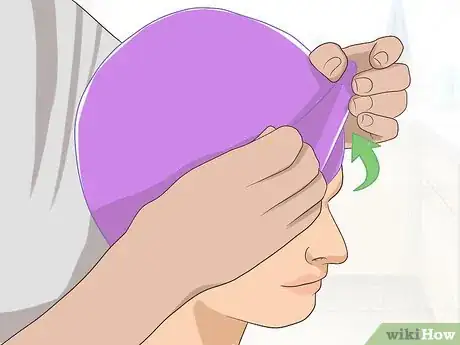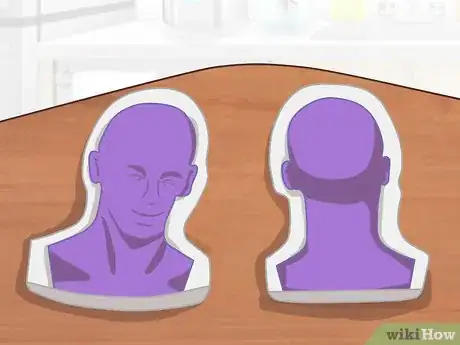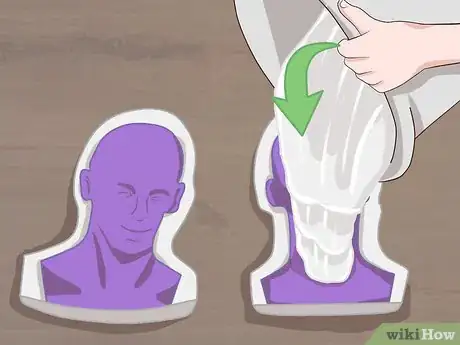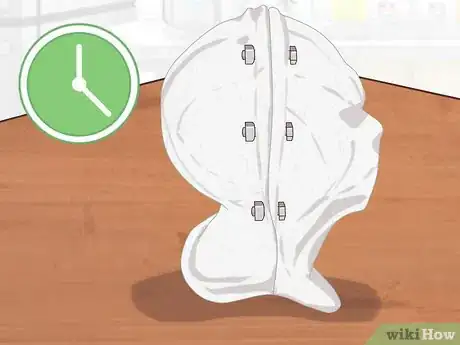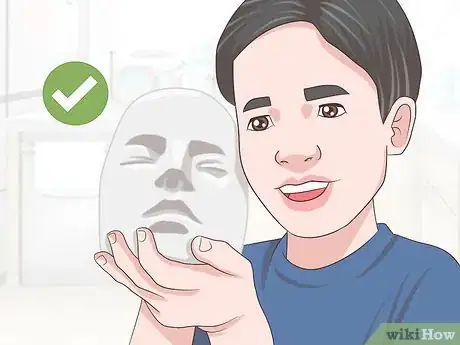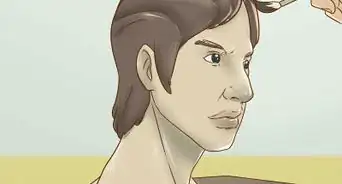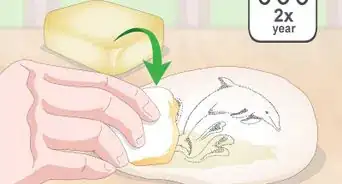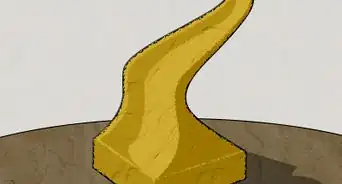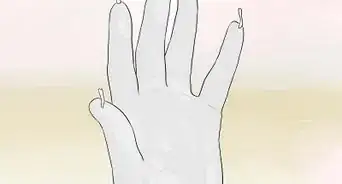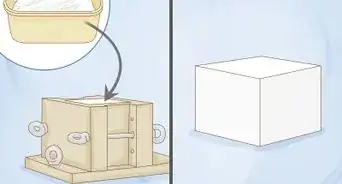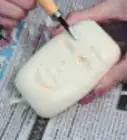X
This article was co-authored by wikiHow Staff. Our trained team of editors and researchers validate articles for accuracy and comprehensiveness. wikiHow's Content Management Team carefully monitors the work from our editorial staff to ensure that each article is backed by trusted research and meets our high quality standards.
There are 8 references cited in this article, which can be found at the bottom of the page.
This article has been viewed 41,273 times.
Learn more...
Life casts can look impressively realistic, so you might be surprised how easy they are to do yourself. We'll walk you through this fun, in-depth process so you can try your hand at making your very own creation!
Steps
Part 1
Part 1 of 3:
Mixing and Applying the Molding Material
-
1Gather your supplies. Life casting requires a variety of supplies, which you will probably need to get from a special effects company or art supply store. Some companies even sell kits with everything you need for life casting.[1] [2] Do not attempt to life cast without the required materials or you will not be able to complete the process properly. You will need:[3]
- Alginate powder. This is what you will mix up to form the molding material. Choose a product made for life casting. If you will be life casting a person's teeth, then make sure to get dental alginate. You will need more alginate if you are casting a large area of a person's body, and less if you are casting a small area. For a large project, you would need about 1.5 pounds, such as for a full adult torso cast. However, for something very small, such as a baby's hand casting, you would only need about 3.5 ounces.[4]
- Plaster bandages (similar to the ones a doctor would use to make a cast). You will need more or less bandages depending on the type of cast you are doing. For something like a full head casting, you might need around 7 rolls of plaster bandages. For something like a half-torso casting, you might only need 3 rolls.[5]
- Plaster. The amount of plaster you will need will depend on the part of the person's body you are casting. For a full front torso casting, you would need between 8 to 10 pounds. For something small, such as a baby's hand, you would need about ½ of a pound.[6]
- Large paintbrushes.
- Buckets for mixing materials.
- Wooden sticks for stirring the materials.
- A bald cap (optional, needed for life casting a person's head only).
- Safety scissors (for casts that go around an entire portion of the body, such as a full head cast).
-
2Enlist the help of a friend or two. Making a life cast of a part of a person's body is much easier with help. You will need to apply the molding material rather quickly and you may also need to mix up multiple batches, so having one or two people available to assist you will make the process much easier.Advertisement
-
3Prepare the area you want to life cast. Before you begin, make sure that the area you want to life cast is completely bare. Have the person remove all clothing from the area and any jewelry that might get in the way.
- If you will be life casting someone's head, then make sure to cover their hair with a bald cap first. There are mold formulas meant for people with facial hair, but the molding material will get stuck in head hair, so cover the person's head completely with a bald cap.[7]
-
4Mix the alginate. Follow the manufacturer's instructions for mixing the alginate to form the molding material. Most of these mixes set up quickly, so you will need to be ready to apply them as soon as they are mixed.[8]
-
5Apply the molding material. Use a large paintbrush to apply the molding material to the part of the person's body that you will be casting. You will likely need to apply three or more layers to ensure an even cover. The molding will set up quickly, but don't wait for each layer to dry fully to apply the additional layers. Just apply them one after the other. The molding material should be nice and thick when you are done.
- Be very careful not to cover the person's nostrils when applying the molding material to someone's face. It is important to leave the nostrils free of silicone so that they can still breathe during the process.[9]
- The molding will set quickly—within 3 to 8 minutes depending on the type.[10] If the alginate does not seem firm, then wait a few more minutes for it to set before applying the plaster bandages over it.
-
6Cover the mold with the plaster bandages. When the alginate molding is set, begin dipping the plaster bandages in water to wet them and then start to apply them over the molding layer. Apply a few layers of bandages over the entire area that is covered with molding. Depending on the area, you may need to cut some of the strips to fit details of the area, such as around the nose and mouth for a face casting.
- Remember to keep the nostrils clear if you are applying the plaster to someone's face.[11]
Advertisement
Part 2
Part 2 of 3:
Removing the Casing and Mold
-
1Let the plaster bandages dry completely. The plaster bandages will begin drying after only a few minutes.[12] However, it will take longer than this for all layers of the bandages to dry and some products may dry more quickly or slowly. Check the manufacturer's instructions for how long to leave the casing in place to be sure.
-
2Remove the plaster casing. Once the plaster bandages are dry, carefully remove the casing they have created from the person's body. Even if the casing is dry, it may still crack or chip, so be very careful as you remove it.
- If you only placed the casing on half of the person's body, such as the front side of their torso or one side of their hand, then you should be able to loosen the edges with your fingertips and then slowly lift the casing away.
- If you placed a cast on a full area, then you may need to break the casing into two pieces. Use a tool, such as a flat edge screwdriver, to carefully separate the two sections.
-
3Peel off the molding carefully. The alginate molding is the last thing that you will need to remove. If you have placed the molding over an entire portion of the body, then you will need to use safety scissors to cut it off.
- Cut across one low detail area of the molding, such as the back of the head, using a zig zag pattern. This will help to make it easier to realign the molding when you are ready to fill it with plaster for the life cast.[13]
Advertisement
Part 3
Part 3 of 3:
Making the Plaster Cast
-
1Cover the mold with the plaster casing. After you have removed the plaster casing and mold, you can begin making your plaster cast. To get started, realign the edges of the mold if you had to cut it. Then, place the mold inside of the plaster casing.[14]
- You may need to use screws to hold the plaster in place if you did a full portion of a person's body, such as a full head cast. Do not screw in the screws all the way or you may crack the plaster and penetrate the mold.
-
2Place the mold open side up. You will need to position the mold so that you can easily pour the plaster into it and so that the plaster will stay put. Find a level surface where the plaster will not be disturbed and that is away from pets and small children.
- If you have a cast of one side of a person's body, place the mold in its casing on a level surface with the mold side facing up.
- If you made a full cast of a body part, such as of a person's head, hand, or foot, then place the mold upside down in an empty bucket.[15]
-
3Mix the plaster. Mix the plaster after your mold is ready to be filled with the plaster. The plaster will begin to set right away, so it is important to use it right after you mix it. Make sure that you do not agitate the plaster too much or it will create air bubbles.[16]
-
4Pour the plaster into the mold slowly. When the plaster is mixed, slowly begin pouring it into the mold. Only fill the mold about halfway at first so that you can use your hand to release any air bubbles if needed. Then, slowly pour in the rest of the way and stir with your hand again to release air bubbles if needed.[17]
- Make sure to wash the plaster off of your hand after you stir to release any air bubbles.
-
5Wait for the cast dry. The plaster will need to dry overnight or possibly longer. Do not disturb the plaster at all during this time. It will look matte and feel hard when it is completely dry.
-
6Remove the outer casing and mold carefully. When the plaster is completely dry, you can remove the outer casing and then remove the mold. Go slowly since the mold may tear if you go too quickly. You can reuse the mold a few times before it will begin to break down, so be extra cautious if you plan to reuse it.[18]
- If there are any rough edges, use a piece of fine grit sandpaper to even them out.
Advertisement
Community Q&A
-
QuestionCan a kid do this if they don't have claustrophobia?
 Alex GriderCommunity AnswerYes, you can even life cast a baby! Adult supervision is required to make sure the alginate is properly mixed (among other reasons).
Alex GriderCommunity AnswerYes, you can even life cast a baby! Adult supervision is required to make sure the alginate is properly mixed (among other reasons). -
QuestionHow does the plaster you pour in not stick to the plaster mold?
 Alex GriderCommunity AnswerOnly the outside of the mold is plaster. The inside, which has the facial details, is alginate. That does not stick to plaster. The plaster is just there for support.
Alex GriderCommunity AnswerOnly the outside of the mold is plaster. The inside, which has the facial details, is alginate. That does not stick to plaster. The plaster is just there for support. -
QuestionWhere can I get bees wax?
 Alex GriderCommunity AnswerSpecialty grocery stores and some craft stores may have it, but your best bet is online shopping.
Alex GriderCommunity AnswerSpecialty grocery stores and some craft stores may have it, but your best bet is online shopping.
Advertisement
Things You'll Need
- Alginate powder
- Plaster
- Plaster bandages (like the ones a doctor would use to make a cast)
- Large paintbrushes
- Buckets
- Wooden sticks
- A bald cap (optional, for casting a person's head only)
- Safety scissors
References
- ↑ http://www.fxsupply.com/life_casting/casting.html
- ↑ http://www.monstermakers.com/product/pro-full-head-lifecast-kit.html
- ↑ https://www.youtube.com/watch?v=V3rxHJPOWHg
- ↑ http://accu-cast.us/how-much-alginate-do-i-need/
- ↑ http://accu-cast.us/how-many-plaster-bandages-do-i-need/
- ↑ http://accu-cast.us/how-much-liquistone-do-i-need/
- ↑ https://www.youtube.com/watch?v=V3rxHJPOWHg
- ↑ http://www.fxsupply.com/life_casting/casting.html
- ↑ https://www.youtube.com/watch?v=V3rxHJPOWHg
- ↑ http://www.fxsupply.com/life_casting/casting.html
- ↑ https://www.youtube.com/watch?v=V3rxHJPOWHg
- ↑ https://www.artmolds.com/pdf/GYPSONA%20Technical%20Bulliten1.pdf
- ↑ https://www.youtube.com/watch?v=V3rxHJPOWHg
- ↑ https://www.youtube.com/watch?v=jz4BUlrfhxQ
- ↑ https://www.youtube.com/watch?v=jz4BUlrfhxQ
- ↑ https://www.youtube.com/watch?v=jz4BUlrfhxQ
- ↑ https://www.youtube.com/watch?v=jz4BUlrfhxQ
- ↑ https://www.youtube.com/watch?v=jz4BUlrfhxQ
About This Article
Advertisement
